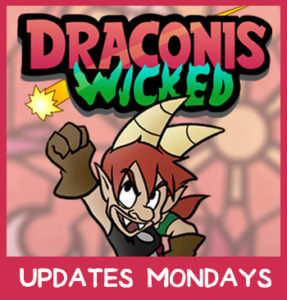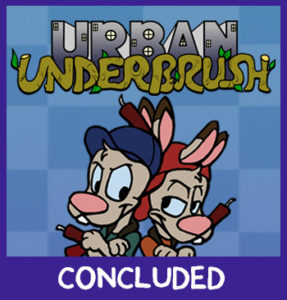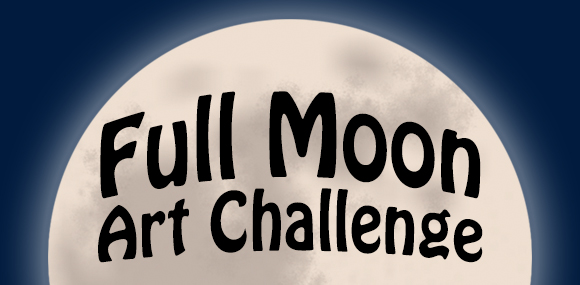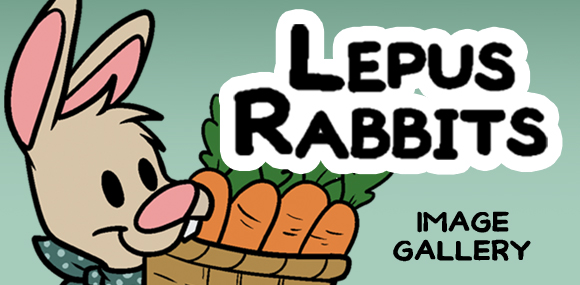I made a short animated cartoon called Cookie Tree. It’s about a stuffed turtle. You should watch it and share it with all your friends.
Comic Series
Latest Comics
I’ve been working on and off on this short for about nine months. Here’s the story of how Cookie Tree was made:
Cookie Tree started as a project for my animation class. I teach a weekend/summer class on Flash animation to kids, who generally find it difficult, but rewarding. Years ago, some of my students started complaining that making movies in the time allotted was impossible. To prove that it was, indeed, possible, I started making animated shorts along with them. During the school year, the students have, roughly eight hours each month to work on their art in the computer studio. So I would give myself eight hours each month to work on my animations at home. At the beginning of each class, the students could check my work and measure my progress. (I have no plans to post those early shorts online, as I am equal parts proud and ashamed of them.) In the end, the experiment was met with overwhelming indifference. It seems that the students were not really concerned with how possible the assignments were. They just liked complaining. So I ended the experiment.
Fast forward to last November. This year’s group of students were different. They might actually appreciate seeing a movie get made. Plus, it had been a long time since I animated anything and I thought it would be good for me to try it again. I had been wanting to make a good short for myself and for my web audiences. Animation class might be a good excuse to make myself start something. I decided to announce the project as soon as I finished the concept sketches.
Coming up with a concept was simple. Each year, our project director gives the students a theme – a broad topic for their art. This year’s theme was The Life of a Toy. So I decided to make a short about a stuffed bear who has to go on a short quest through his family’s back yard. Only I didn’t know what he was questing for or why.
The rest of the story came to my one evening as I was watching my one-year-old nephew. He was sitting in a bouncy chair, holding a small plush toy. Not surprisingly, he dropped the little animal and it fell to the ground below his feet. The poor kid started stretching a fussing as he hopelessly tried to pick up his little friend. As I handed it back to him, I thought about how frustrated he must have been to have something that he wanted go just barely beyond his grasp. I realized that was what my story was missing. The stuffed animal in my film should be helping a baby. The toy could come to life when only his kid was around and help him do thing that babies can’t quite do for themselves. Since my nephew has an impressive collection of plush turtles, the bear became a turtle instead.
First concept drawings
After the kid went home, I finished the concept sketches, most of the storyboard and, later, the animatic. I presented them to my students the following week. This pre-production stuff carried over to the final project pretty faithfully.
Here’s page one of the storyboard, which was later scanned and turned into an animatic. The frame where the turtle wipes his nose was dropped. So was the cookie close up (you can see that frame is maked with an “X”) Everything else is in the final film.
Even though the movie would only run for three minutes, it was an ambitious concept for one person to animate alone. I remember joking that I might one day be showing a newly finished film to a confused, fourteen-year-old nephew, who would ask “Why did you make me a baby?” And I, bitter from 13 years of animation, would reply, “because shut yer mouth, that’s why.”
Now that I was ready to start making the actual short, I figured it would be best to begin with the backgrounds. I decided that as long as I was challenging myself, I would really push myself outside of my comfort zone. Usually, when I animate, I draw the character frames by hand and then create the backgrounds digitally. This time, I decided to do the opposite – paint the backgrounds and draw the characters directly in Flash. I started painting the backgrounds shortly after Christmas. I used watercolor pencils for a clean but sketchy look. I had just received a set of rendering markers for Christmas, which I used to add the outlines. Since I was limiting the time I could spend on the project each week, the backgrounds took about a month.
One of the hand-painted backgrounds. The short used fourteen different backgrounds and five painted branches.
Character animation went quickly at first. I placed the backgrounds, drew rough shapes to represent each character, then gradually replaced each rough shape with a finished character made from shapes and lines. That gave me the clean look I wanted, but it was a little tedious and made fluid movements difficult, especially on the human characters. If I ever make another short in this fashion, I’ll probably use the digital paint brush for characters outlines.
By the time spring classes had ended, I had finished all the turtle animations, some of the baby animations, and none of the father animations. I squeezed in a voice recording session with my brother-in-law so the movie would be slightly coherent when showed it to my students, with the promise that it would be finished by the time summer classes started up in July. At this point, the limited time rule had also gone out the window and I was giving this project all the time I wanted. (Well, maybe not all the time I wanted. I still finished my comics and went to work and stuff.)
Of course, every project like this has at least one set back, and mine came about four weeks before the film was due. My computer had started running slow and was becoming a little unreliable. In June, it actually destroyed an Urban Underbrush comic, which I grudgingly re-colored hours before it posted. Then it stopped opening the Flash editor, which is kind of important when you’re making a Flash movie. I couldn’t tell if it was the computer or the Flash program that had gone bad on me, so I took my computer to the shop, where it was diagnosed with faulty sensors. (I already told that story here.) A three-day repair job ended up taking more than a week. I would never have finished on time if my sister, Emily, hadn’t lent me her laptop. I was pretty close to the end of the short, so it only took one night of computer-borrowing. I was never happier to stay up all night working on something.
So the animation was finished, but the film had no music. My sister Liz, the musician of the family, had offered to write the music. (I’m making her something in return. I can’t talk about it yet, but it will be awesome.) However, since the action scenes have no sound effects, the music had to compliment the actions. The music had to match the timing of the animation, which meant that Liz couldn’t even start the music until all the animation was finished. I gave Liz a version of the film and told her that the movie didn’t need to debut on the first day of class. As long as it was finished before the first week was up, we’d be okay. We also looked at a few shorts and discussed what the tone of the piece should be. Liz is great to work with. She adds her own ideas, but she also really listens to what I had in mind. The music took Liz a few days, but she nailed it. The movie ended up with a score that feels like a blend of classic pop, video game soundtracks, and storybook themes. I guess that’s about right.
I did a little adjustments to the animation to make sure everything was clear, threw in the rest of the sounds (birds chirping and baby crying) and hit the publish buttons.
The movie was presented to my class on July 11. Of course, by this point, it was much more than a teaching tool. I had planned on posting it online to share with my family, friends, and internet followers. A few of my cousins have already seen it before it went live. But it was nice to have my class as a jumping-off point. If I didn’t have a reason to make this film, even a reason that I, myself, had invented, I would probably never had finished, possibly never had started.
Thanks to everyone who helped make the film and thanks to those of you who watched it. You make my work possible.
-Marj




























